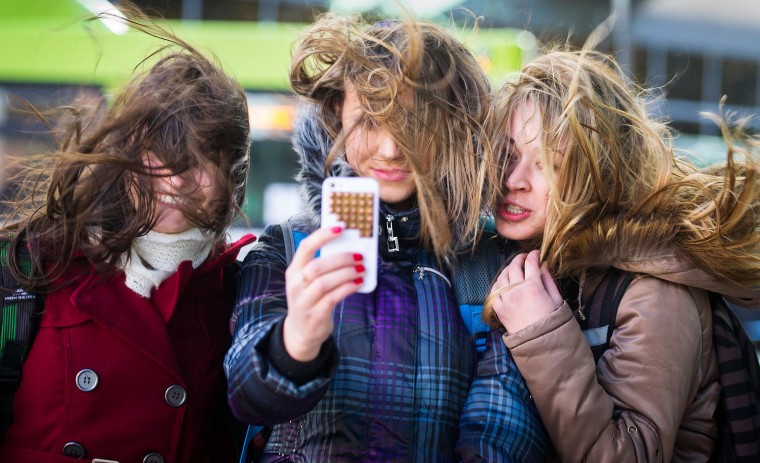The story that teens were getting lice by taking too many selfies went viral on Monday. But is it true?
First, the source of the story. Marcy McQuillan, who offers lice removal services in Northern California, told SFist that she was seeing a “huge increase of lice in teens this year” because they are “sticking their heads together every day to take cellphone pics.”
This phenomenon is known as the “selfie,” a ritual practiced by everyone from the Pope to President Barack Obama. It turns out, however, that while sticking their duck faces together for a group photo might increase their chances of being labeled a narcissist, teens are probably not catching lice because of it.
“This is a marketing ploy, pure and simple,” Dr. Richard J. Pollack, who teaches at the Harvard School of Public Health and runs a pest identification business called IdentifyUS, told NBC News. “Wherever these louse salons open a new branch, there always seems to be an epidemic. It’s good for business. “
Reliable data on how many people get head lice each year in the U.S. are not available; however, an estimated 6 million to 12 million infestations occur in the country each year among children 3 to 11 years of age, according to the federal Centers for Disease Control and Prevention.
Pollack claimed that there was no evidence of an uptick in head lice in the U.S., either among teenagers or elementary school children. The reasons why contamination-by-selfie is unlikely, according to Pollack:
- Teens almost never have head lice, meaning they are not likely to spread it, even if they are taking a lot of selfies. Lice is most common in children who are in kindergarten to fourth grade.
- Lice is normally spread through “direct and prolonged head-to-head contact.” Yes, it’s theoretically possible for teens to spread lice by taking a selfie, but it would be an extremely rare occurrence. The idea of it happening enough to be considered a widespread problem is “ridiculous.”
Most often, Pollack said, what parents think are lice are often just dandruff or crumbs. The bigger problem? Businesses charging scared parents big bucks to rid children of non-existent head lice.
“I’m trying to prevent people from over-treating,” he said. “People should not be using insecticides on their kids unless there really is a reason to use them.”
